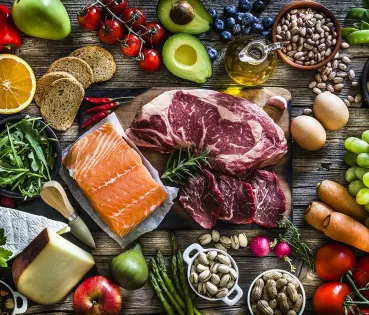
How to ensure you’re getting enough calcium despite a dairy-free diet
There are many ways to get the calcium you need when avoiding dairy as long as you include some healthy and readily available foods. Find out which foods you should definitely be including in your diet.
Increasing your calcium intake doesn't have to rely on dairy consumption. In the past, calcium was seen as linked only with cow's milk and other dairy products such as cheese and yoghurt. Nowadays, however, we know that there are many other foods, including plant-based foods, that provide significant amounts of calcium. This is of particular interest to those who follow strict vegetarian or vegan diets, as they avoid dairy products.
What calcium does for you
Calcium is the most abundant mineral in our body and is mainly stored in bones and teeth. Calcium is involved in many functions. It contributes to bone growth, development and maintenance, as well as limiting bone demineralisation in postmenopausal women. It is also crucial for healthy teeth and is involved in muscle contraction and blood clotting. Furthermore, it contributes to normal energy metabolism and the operation of digestive enzymes.
Calcium-rich foods
In addition to dairy products, calcium is found in a large range of foods that can be part of a healthy diet. For example:
- Nuts, such as almonds, pistachios, walnuts, etc.
- Sesame seeds (or tahini), sunflower seeds, etc.
- Small oily fish with plenty of bones. For example, sardines, anchovies, anchovies, etc.
- Green leafy vegetables, e.g. rocket, chard, etc.
- Cruciferous vegetables, such as broccoli, kale, Brussels sprouts, etc.
- Legumes, especially chickpeas, beans and soya beans (edamame, tofu).
- Seafood, such as clams and cockles.
Calcium-fortified foods, such as vegetable drinks.
Calcium and vitamin D
Adequate levels of vitamin D are essential to ensure intestinal calcium uptake, bone absorption of calcium and its renal reabsorption (avoiding urinary losses of this mineral). For all these reasons, it is also necessary to ensure a few minutes of daily exposure to the sun, as well as the consumption of foods rich in vitamin D. Should there be a deficiency or lack of this vitamin, its supplementation should be contemplated, as lack of vitamin D could jeopardize bone mineralisation, among other things.
How much calcium is necessary?
The amount of calcium required varies throughout life and may be higher in some specific situations. At the broader population level, the recommended intake is that amount which should cover the daily requirement of a nutrient for the vast majority of the healthy population.
Contrary to what was once believed, milk is not an essential food for bone health even when growing, as the nutrients it contains are also found in other types of food. Current recommendations are 0 to 2 servings of dairy products per day. With regard to calcium, we have already seen that it is available in many foods other than dairy, such as green leafy vegetables, legumes, nuts, seeds and oily fish.




